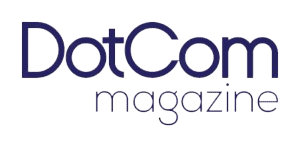Don`t let dream steal take your dream away… They will give you 10 reasons why you can`t… Give yourself one reason why you can and do it! Entrepreneurs let`s go entrepreneurs rule #entrepreneurship #entrepreneurlife #entrepreneur

Quick marketing hack #growthhacking #entrepreneurship #entrepreneurlife

Entrepreneurs… Bend the rules!#entrepreneurship #businessmindset #entrepreneur

They really are no new big ideas…#Entrepreneur #entrepreneurship #entrepreneurlife

Entrepreneurship in under 30 seconds… Thank you for the email! That was challenging but here`s your answer and I hope you like it!#entrepreneurship #entrepreneurlife #entrepreneur

ChatGPT and Claude jump the damn shark… They`re on TV now…#entrepreneur #entreprenuerlife #entrepreneurship

What should you do when your top producing salesman is wrecking havoc on your entire salesforce?#entrepreneurship #entrepreneurlife #entrepreneur

Are we all screwed with AI? If you listen to the long format interviews of CEOs running AI, they sound confused, and uncertain. #entrepreneur #entrepreneurship #entrepreneurlife

Understanding how AI will change the online advertising platforms is essential for any brand, marketer, or business hoping to stay competitive in the digital era. From real-time personalization to advanced targeting and predictive analytics, how AI will change the online advertising platforms is reshaping the entire digital ecosystem. And make no mistake—how AI will change the online advertising platforms is not about minor tweaks. It’s a full-scale transformation that touches every facet of how ads are created, optimized, and delivered. If you want to thrive, not just survive, in the AI-driven advertising age, here are the 10 things you absolutely need to get right.
1. AI Is Powering Hyper-Personalization at Scale
Gone are the days of one-size-fits-all digital ads. AI has ushered in a new era of hyper-personalization where each user can receive uniquely tailored content based on their behavior, demographics, preferences, and engagement history. This is accomplished by processing massive amounts of data in real time—something humans simply can’t do.
For example, AI can segment audiences on the fly and deliver different ad variations to different users depending on the context, device, time of day, or even emotional tone. Personalized ads have significantly higher conversion rates and reduce wasted ad spend. Platforms like Facebook, Google, and TikTok are already using AI to fine-tune their recommendation and delivery systems. If you’re not leveraging personalization, you’re falling behind.
2. Predictive Analytics Is Revolutionizing Ad Targeting
One of the most impactful ways AI is changing online advertising is through predictive analytics. By analyzing past behavior, AI can forecast future actions—such as what products a user might be interested in, when they’re likely to buy, and how much they might spend.
This predictive power enables advertisers to reach users at the right time with the right message. AI models score leads, assign conversion probabilities, and help determine budget allocation across channels. With tools like Google Performance Max and Meta’s Advantage+ campaigns, predictive AI is already being used to optimize ad delivery far beyond what manual setups can accomplish.
3. AI Optimizes Bidding in Real Time
Programmatic advertising platforms are driven by automated, real-time auctions. AI has taken control of these systems and turned them into sophisticated engines of efficiency. Instead of relying on static bidding rules, AI dynamically adjusts bids based on performance data, user behavior, competition, and relevance scores.
This results in better ROI because your ads are shown to the right people at the right price. Smart Bidding strategies in Google Ads, for instance, use machine learning to tailor bids for each auction. Advertisers who embrace AI-driven bidding save time, reduce costs, and often see dramatic increases in ad efficiency and profitability.
4. AI Is Enhancing Creative Development and Testing
Ad creatives—headlines, visuals, videos, and copy—used to be developed entirely by humans. Now, AI tools are increasingly involved in ideation, generation, and testing. AI can analyze which creative elements drive the most engagement and suggest new variations or even generate full ads autonomously.
Tools like Jasper, Copy.ai, and ChatGPT can generate ad copy in seconds. Platforms like Meta’s Creative Hub and Google Ads’ responsive display ads allow AI to mix and match assets to find the best-performing combinations. This not only speeds up the creative process but also introduces continuous A/B testing at scale.
5. Chatbots and Conversational AI Are Redefining Engagement
Conversational AI is not just for customer service—it’s becoming a critical piece of online advertising. Chatbots powered by AI can guide users through product discovery, answer questions, and convert leads directly from an ad experience, especially on platforms like Messenger or WhatsApp.
Instead of clicking a link and landing on a static page, users now expect dynamic, interactive experiences. AI chatbots respond in real-time, personalize the conversation, and drive higher engagement rates. Brands that integrate conversational AI into their advertising funnel are seeing major improvements in lead generation and customer satisfaction.
6. AI Enhances Audience Segmentation and Lookalike Modeling
In the past, audience targeting was limited to basic demographics and behavior data. AI allows for much deeper segmentation using thousands of signals from a user’s digital footprint. It can group users into highly specific cohorts, enabling ultra-precise targeting.
Additionally, AI enhances lookalike modeling. Platforms can analyze your best-performing audiences and find new users who share similar characteristics. This helps expand your reach without sacrificing quality. Facebook’s and TikTok’s algorithms are well known for their superior lookalike and interest-based models—powered largely by AI.
7. AI Helps Detect and Prevent Ad Fraud
Online advertising is plagued by fraudulent clicks, fake impressions, and bots. AI systems can detect anomalies in real time—such as click farms, abnormal engagement patterns, or location mismatches—and take action to prevent fraud.
This saves advertisers billions of dollars annually. Companies like DoubleVerify and Moat use AI to monitor ad integrity and ensure that impressions are served to real humans. Google and Meta have their own AI systems designed to flag suspicious activity before it affects campaigns. Advertisers using fraud detection powered by AI are more likely to get accurate data and real results.
8. Voice and Visual Search Are Shaping the Future of Ad Formats
AI is enabling new search behaviors—especially voice search and visual search—which are beginning to change how ads are created and placed. Consumers now search using smart assistants like Alexa or Google Assistant, and AI must interpret these queries contextually.
At the same time, visual search tools like Google Lens or Pinterest Lens let users search by uploading photos. AI analyzes the image, understands what it contains, and returns product results. Brands can now optimize for these new formats by feeding AI with image data, alt text, and schema markup to ensure visibility across emerging platforms.
9. AI Makes Cross-Platform Attribution More Accurate
One of the biggest challenges in digital advertising is attribution—understanding which ads or touchpoints contributed to a sale. AI is now used to analyze vast amounts of multichannel data and assign accurate credit across various customer interactions.
Traditional last-click attribution is flawed because it ignores all the other steps a user takes before converting. AI attribution models (like data-driven attribution in Google Ads) consider impressions, clicks, page visits, video views, and device switching behavior to build a full picture of the buyer’s journey. This insight helps marketers allocate budgets more effectively and improve ROI.
10. Ethics, Transparency, and AI Governance Are Now Business Imperatives
As AI becomes more powerful in online advertising, ethical considerations take center stage. Targeting based on personal data must comply with privacy regulations like GDPR and CCPA. AI algorithms must be transparent, explainable, and free from bias.
Consumers are becoming more aware of how their data is used, and regulators are keeping a close eye on AI-powered advertising practices. Marketers must ensure their AI tools are ethical, fair, and inclusive. Clear consent mechanisms, transparent data use policies, and regular audits are not just best practices—they are essential for long-term trust and compliance.
The Future: Continuous Learning and Autonomous Advertising
The future of AI in online advertising is one where campaigns are increasingly autonomous. AI systems will not only manage bids or analyze performance—they will also plan entire campaigns, allocate budgets, write ad copy, design creatives, and adjust strategy without human input.
This doesn’t mean humans are obsolete. On the contrary, marketers will shift their focus from execution to oversight, strategy, and creativity. The human role will involve setting goals, aligning campaigns with brand values, and ensuring ethical AI usage.
As AI continues to evolve, staying current is vital. Brands that fail to adapt risk falling behind, while those that embrace AI-driven transformation will lead the market.
Conclusion: What You Must Get Right to Win in the AI-Driven Ad World
If you want to stay ahead of the curve, you must understand how AI will change the online advertising platforms—because it already is. From predictive targeting to autonomous campaign optimization, how AI will change the online advertising platforms is not just a technological shift—it’s a redefinition of what advertising means.
So what should you do? Get the technology right. Get the data strategy right. Get the creative process right. But above all, get the ethical approach right.
Because ultimately, how AI will change the online advertising platforms isn’t just about machines—it’s about people, trust, and delivering value in a way that feels seamless, intelligent, and human.









